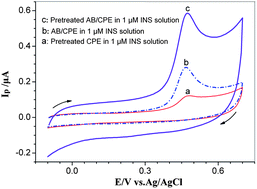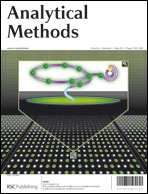Electrochemical behavior and analytical detection of insulin on pretreated nanocarbon black electrode surface†
Abstract
This work takes advantage of electrochemically anodic pretreated carbon paste

- This article is part of the themed collection: Future Electroanalytical Developments

 Please wait while we load your content...
Please wait while we load your content...